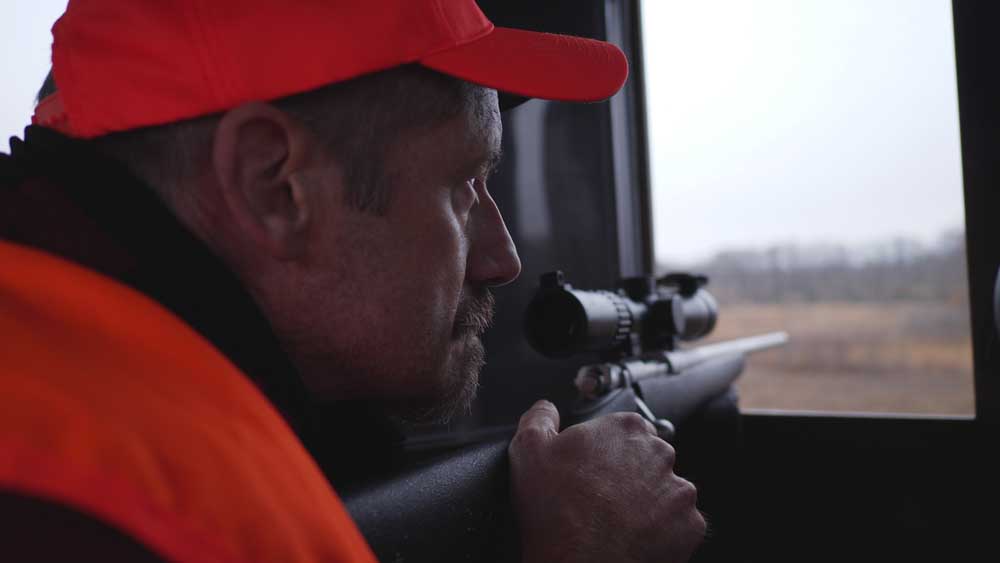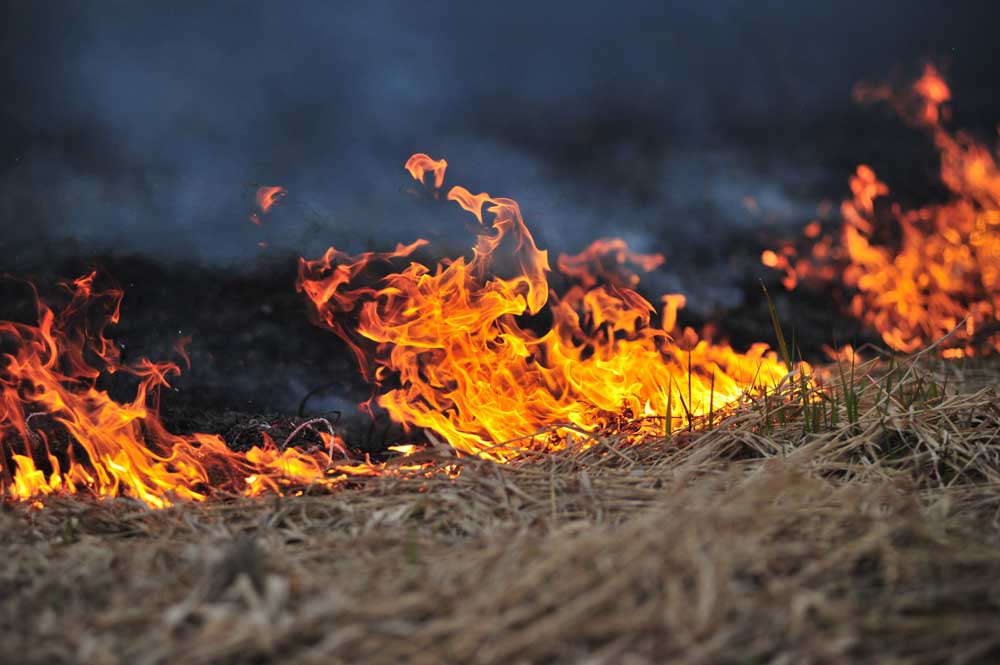Deer hunting: A trip back to the start of the Oregon Trail
Published 6:05 pm Wednesday, August 15, 2018

- Watching through the window of a deer blind in Carroll County, Missouri. (Sam Pyke/Submitted photo)
The Oregon Trail ended for some at The Dalles, and for others at Oregon City. But it started in Missouri when pioneers pulled up stakes in search of a new start.
When we hunted Missouri, my mind’s eye conjured images of Missourians lining out in Conestogas and Studebaker wagons. Most of all, on this deer hunt, I wanted to see the James Farm.
When we pulled off state Highway 92 onto the grounds of Jesse James’ birthplace in Clay County, it was easy to imagine a band of Northern militiamen on horseback riding into the fields where Dr. Samuels and his 15-year-old stepson plowed corn.
In the book “Jesse James, My Father,” author Jesse James Jr. set the scene.
“They took Dr. Samuels from the plough and drove him at the points of their bayonets to a tree near the barn and put a rope around his neck and hung him to a limb until he was nearly dead. Then they lowered him, loosened the rope, and demanded that he tell where Quantrell was.”
Quantrell was William Quantrill, who led a band of guerrillas in western Missouri. The Federals strung Dr. Samuels up again, trying to choke the answer out. Then they turned on Jesse, driving him up and down the corn rows with a whip.
Next, they went to the house. The 6-foot-tall mother of 15-year-old Jesse James could not say where Quantrill was either, and the Federals took Dr. Samuels away to a jail at Liberty.
“Ma, look at the stripes on my back,” Jesse said. Zerelda James peeled the bloody shirt off the back of the boy and knew he wouldn’t be safe here any longer. In fact, it wasn’t to be a safe place the rest of his life, although he returned many times for fresh horses and a meal, splashing away afterward through the creek.
Our hunt was on the border of Carroll and Caldwell counties near a town called Braymer, population 878. Sam Pyke and I flew to Kansas City, Missouri, rented a vehicle and drove north and east through Kearney, arriving after dark on the farm of my friend Levi Mallory.
Well before dawn the next day, we walked out in the dark on a two-track farm road.
In November’s whitetail rut, bucks stay on the move checking for females in heat. The does using our bean field must have been downright chilly. The second day we hunted a different field, following a map sketched on a piece of paper to find our blind.
We climbed up the scaffold in the dark and watched the tree lines as the sun came up.
I saw the first buck at 11 a.m. and it wasn’t until after 4 p.m. that we saw the next ones.
Three bucks ran in from the east. They flowed in and out of sight on every bound. As fast as they appeared they vanished again.
With our optics, Sam Pyke and I probed a screen of trees. Antler tips caught a beam of evening light and gave the buck away. Eight points total, four per side. For the next two hours, we kept track of the big one by watching its antlers. Once, the line of its back appeared above the tops of the rye.
He turned a circle and bedded again. And that was how we left him at dark. Was it too much to hope he’d be there in the morning?
We climbed into the stand well before the first rays of the sun began to light the eastern sky.
Fifteen hours after we first spotted the buck, we saw him, but only the tips of his antlers. We knew he would stay because he had a doe, and wherever we saw the tips of her ears we saw him close behind.
More than an hour went by when, off to the west, I heard a buck grunting and a clash of antlers against tree branches. The eight-point ran up the tree line to run off his rival. He would be back.
When he returned, he stood on a rise of land and swiveled his head one way then the other, affording us a better look.
The crosshair found a bit of brown hide. The centerline of the index finger intersected with the centerline of that delicate crescent of trigger. Three pounds of pressure and the rifle cracked.
The buck dropped out of sight in the tall grass along the woven fabric of the tree line.
In November, the topic of conversation in small-town Missouri seldom strays far from deer hunting. The first person we spoke to was the lady at the rental-car counter. “Going hunting?” she asked. The lady at the gas station asked, “Did you get your deer yet?”
On the James Farm, they wanted to hear about our hunt, too. We watched a 21-minute film, toured the museum, then walked a winding path along the creek to the place where young Frank and Jesse learned to work, learned to shoot, then learned to stay away.
We stood at the window where Pinkerton detectives, on a January night, knelt in the snow to throw a bomb into the living room. Jesse’s mom, Zerelda, lost her arm and Jesse’s 8-year-old half-brother lost his life.
We stopped in a tire store in a small town and talked deer hunting with the owner. A customer, rightly divining our interest in history, interjected with strong opinions a traveler might have heard when Jesse James was a boy. It was enough to make a guy pack up and move West.
— Gary Lewis is the host of “Frontier Unlimited TV” and author of “Fishing Central Oregon,” “Fishing Mount Hood Country,” “Hunting Oregon” and other titles. Contact Lewis at www.GaryLewisOutdoors.com.








